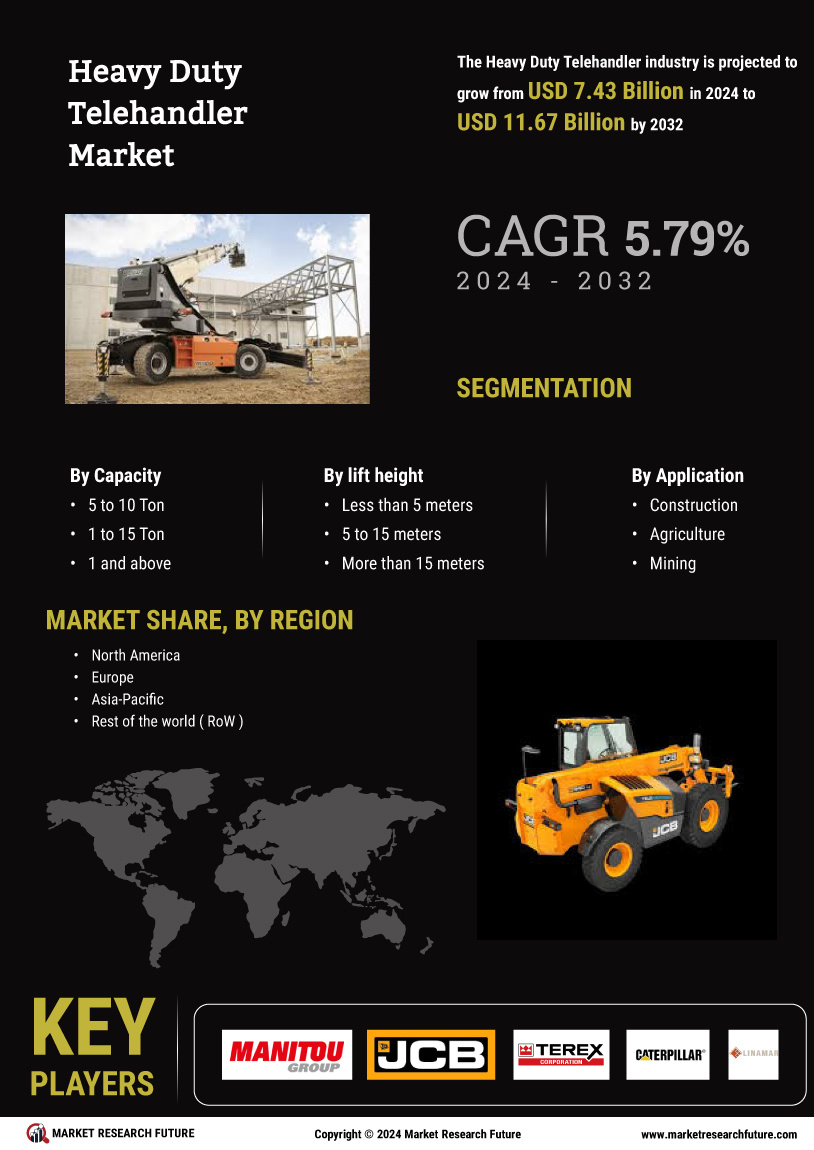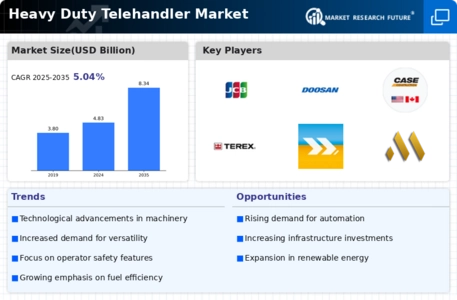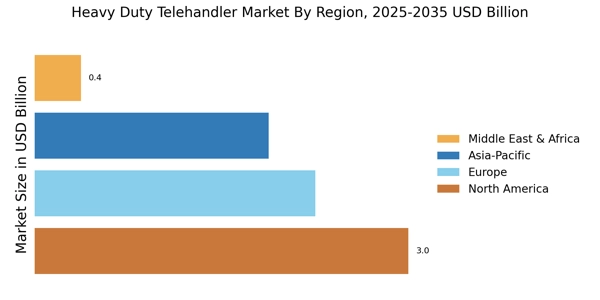Technological Innovations
The Heavy Duty Telehandler Market is being significantly influenced by technological innovations that enhance the performance and efficiency of telehandlers. Advancements such as telematics, automation, and improved engine technologies are making these machines more efficient and user-friendly. For instance, telehandlers equipped with telematics systems allow operators to monitor performance metrics in real-time, leading to better maintenance and reduced downtime. The integration of automation features is also expected to streamline operations, making telehandlers more appealing to businesses. As these technologies continue to evolve, they are likely to attract more investments in the heavy-duty telehandler market, fostering growth and expanding the range of applications for these machines.
Focus on Safety Regulations
The Heavy Duty Telehandler Market is increasingly shaped by stringent safety regulations that govern equipment usage in various sectors. As safety becomes a paramount concern, manufacturers are compelled to enhance the safety features of telehandlers. Compliance with safety standards not only protects operators but also minimizes liability for companies. The introduction of features such as advanced stability systems, improved visibility, and operator training programs is becoming commonplace. This focus on safety is likely to drive the demand for heavy-duty telehandlers, as companies seek to ensure compliance while enhancing operational efficiency. Consequently, the market is expected to grow as businesses prioritize safety alongside productivity.
Expansion of Rental Services
The Heavy Duty Telehandler Market is benefiting from the expansion of rental services, which provide businesses with flexible access to heavy-duty equipment without the burden of ownership. The rental market for construction and agricultural equipment is projected to grow, driven by the need for cost-effective solutions. Companies are increasingly opting to rent telehandlers for short-term projects, allowing them to allocate resources more efficiently. This trend is particularly evident in sectors where project timelines are variable, and the need for heavy-duty equipment fluctuates. As rental services continue to expand, the heavy-duty telehandler market is likely to see increased demand, as businesses leverage these services to meet their operational needs.
Rising Demand in Agriculture
The Heavy Duty Telehandler Market is witnessing a notable increase in demand from the agricultural sector. Farmers and agricultural businesses are increasingly recognizing the advantages of telehandlers for various tasks, including lifting, loading, and transporting materials. The versatility of heavy-duty telehandlers allows them to be utilized in diverse agricultural applications, from moving bales of hay to handling pallets of produce. Recent statistics indicate that the agricultural machinery market is expanding, with telehandlers playing a crucial role in enhancing productivity. As the need for efficient and reliable equipment grows, the heavy-duty telehandler market is likely to benefit significantly from this trend, as agricultural operations seek to modernize and improve their efficiency.
Increased Construction Activities
The Heavy Duty Telehandler Market is experiencing a surge in demand due to the rise in construction activities across various sectors. Infrastructure development, residential projects, and commercial construction are driving the need for heavy-duty equipment. According to recent data, the construction sector is projected to grow at a compound annual growth rate of approximately 5% over the next few years. This growth is likely to necessitate the use of telehandlers, which offer versatility and efficiency in material handling. As construction companies seek to optimize their operations, the adoption of heavy-duty telehandlers is expected to increase, thereby propelling the market forward. The ability of these machines to operate in challenging terrains further enhances their appeal in the construction industry.


















Leave a Comment